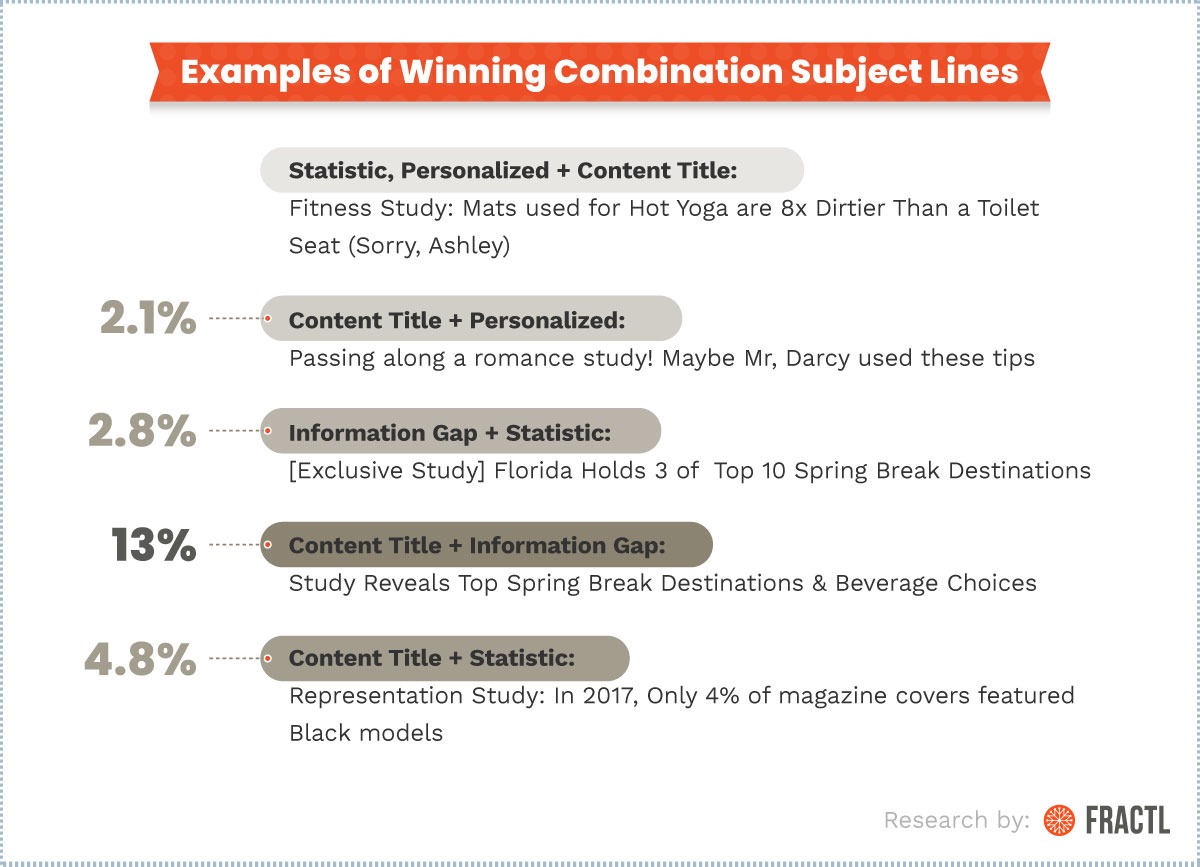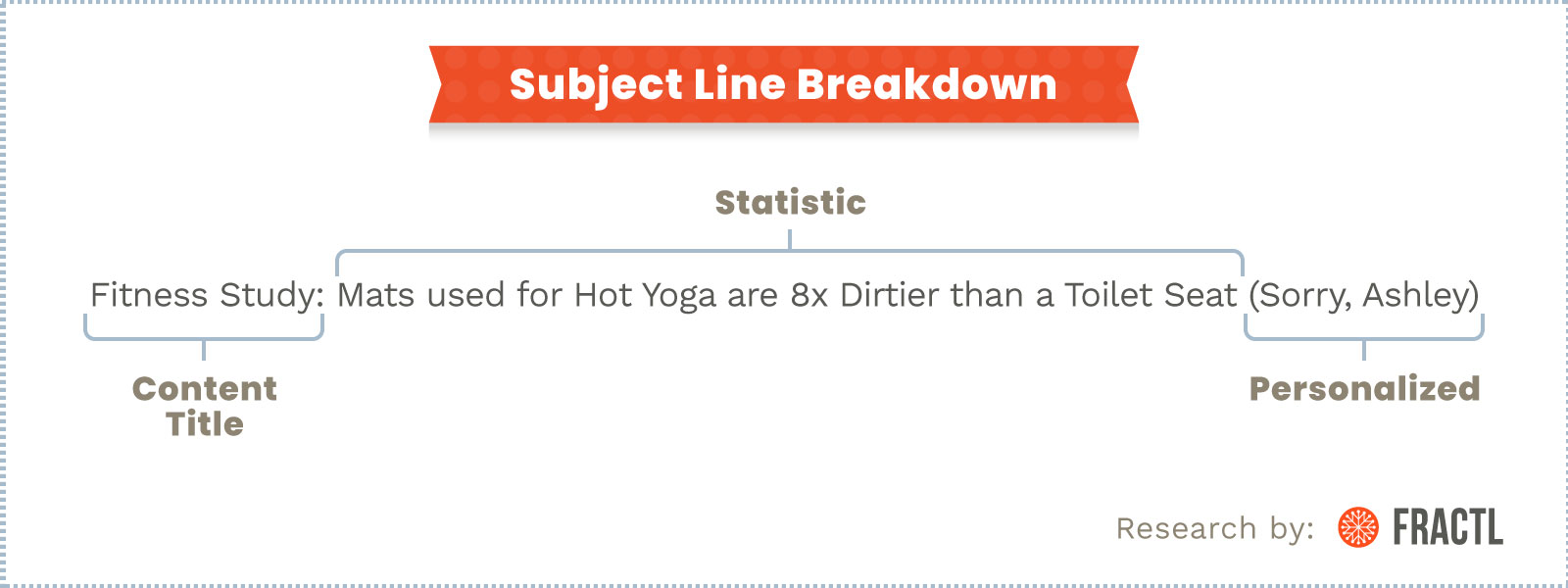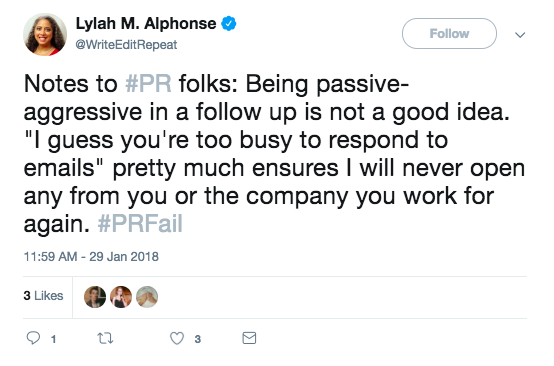 In the United States alone, there are five communications professionals for every one journalist. That’s a lot of media pitch overload waiting to happen.
In the United States alone, there are five communications professionals for every one journalist. That’s a lot of media pitch overload waiting to happen.
With such heavy competition, it has become increasingly challenging to secure press mentions for your brand or your clients.
And journalists are being bombarded by a multitude of media pitches every day.
So how can your team continue to maintain above average industry placement rates and build relationships with publishers?
To figure this out, answer these questions:
- What are we already doing that works?
- In what areas can we improve?
- How can we make our pitches stand out in a journalist’s congested inbox?
Recently, Fractl decided to tackle these questions by conducting an internal analysis of their pitch strategies.
Over the course of a single quarter, they recorded every single successful email pitch the Senior Media Relations team sent.
These 150 pitches resulted in top-tier coverage from high-authority sites like CNN, Forbes, the Motley Fool, and Bustle.
And here is what they found:
Tips for a Successful Media Pitch: Crafting Compelling Subject Lines

For this graphic, the subject line is a mere 10 words or so. But it is capable of causing a lot of anxiety when crafting the perfect email.
Why? Well, Fractl’s survey of 1,300 publishers showed that 85 percent of writers open a pitch based on the subject line alone.
The key to capturing a more effective subject line involves writing something you know will compel the recipient to open your email.
From my experience working in media relations, I learned the most effective subject lines are characterized by the following traits:
- Incites curiosity
- Relevant to the journalist
- Offers value
Our team’s subject lines tend to fall into a few different categories when attempting to check those three boxes. Resulting in thirty-two percent of our placements coming from subject lines that were statistic-based.
Let’s take a more in-depth look:
- Statistic-based subject lines include a data point from the content you’re pitching. A subject line of “32 percent of Winning Subject Lines Include a Data Point” is a good example.
- Information gap subject lines neglect to include some key information and incite the recipient to click to find out more. For example, “These are the most effective subject lines for link building,” a more vague method to pull in the recipient.
- Content title subject lines explain the body of your pitch. By acting as a summary for your pitch, these are informative. Such as: “Infographic: How to Craft the Perfect Subject Line.”
- The personalized subject line is just that—personal. This is written on a pitch-by-pitch basis. It requires you to get to know the email recipient through their author archives or digital footprint (e., Twitter profile, Instagram, etc.). An example is “Cheers from a fellow ex-Vermonter—I’m glad I moved, too.”
Get Creative with Subject Lines Types in Your Media Pitch

When conducting this analysis, I was surprised to find our team tends to create hybrid subject lines that offer even more value to the recipient.
My favorite from the analysis is a combination of statistic, personalized, and content title.
So let’s break it down by using an example of one of our successful pitches:
Fitness Study: Mats used for Hot Yoga Are 8x Dirtier than a Toilet Seat (Sorry, Ashley)

Right off the bat, the recipient knows that a new study relating to fitness has come into their inbox with “Fitness Study,” using the Content Title subject line method.
Following this, we read a shocking statistic about toilet seats that not only incites the recipient to want to learn more but explains the context of the fitness study itself.
Lastly, the “(Sorry Ashley)” bit lets the recipient know the sender did their research. And they are reaching out with intention, knowing a bit about that person and the audience of the publication they’re pitching.
So now you can test using a combination of subject line types to achieve a subject line that is relevant, click-worthy, and offers value.
Tips for a Successful Media Pitch: Staff Writers vs. Staff Editors

Ah, the age-old question. Whom do you pitch at a media outlet: Staff writer or editor?
There are two ways of thinking about this.
When you approach a staff editor, you’re going right to the source. And often, they’ll assign the article out to a staff member they think is a good fit for the publication’s goals.
On the other hand, going to a staff writer is appealing because they know their editor better than you.
This ensures they’ll frame your content for an article in a way their editor will approve.
In this case, my team pitched writers more often than editors.
But that said, the editors don’t always turn a deaf ear to pitches.
In fact, 30 percent of our team’ successful placements from this analysis were from pitching the editors themselves.
Pitch Length Matters, But it Doesn’t

The average time most people spend reading a single email is 11.1 seconds.
And while the amount of time can vary depending on the sender, recipient, and content, 11.1 seconds is something to consider when writing your own outreach emails.
We all know that editors and journalists are busy people.
They don’t have time to read a 500-word pitch.
And they need enough information about the content you’re pitching to make an informed decision, without the hassle of having to ask for more information.
A good guideline to set for email pitches is around 200 words. But sometimes, you’ll write well above 200 words (I’m looking at you, 300+). And if the situation permits, you might write well below 200 words. It just depends.
For my team, the average word count for our analysis of 150 successful pitches came in at 174 words. Right in between that sweet spot of 150 and 200 words.
Now, if you struggle to land below 200 words, try eliminating irrelevant information or flowery language from your pitch.
And use bullet points to explain the most relevant information in an easily digestible way.
The Media Pitch: Don’t Forgo the Follow Up

Communications pros might have the idea that sending a follow-up email is bad practice.
And certainly, tweets from journalists complaining about media pitches are never lacking.
Seventeen percent of the successful pitches we sent were placed as a result of a follow-up email. You read that right. Seventeen. Percent.
One-in-six placements, simply because our media relations specialists thought to send a follow-up.
Whether your follow-up annoys a journalist or not depends entirely on your tone and targeting.
If the content of your pitch is sound and relevant, a follow-up email could be all that stands between you and a press mention for your client.
A Successful Media Pitch: Not a One-Size-Fits-All Approach
When it comes to digital media outreach, there is no one-size-fits-all plan you can read about in a manual.
Each outreach email you send will differ depending on who and what you’re pitching.
Spend time analyzing your digital media efforts.
Over time, this can help to identify trends in your current outreach strategy that will help inform your practices as a team.
Images courtesy of Fractl